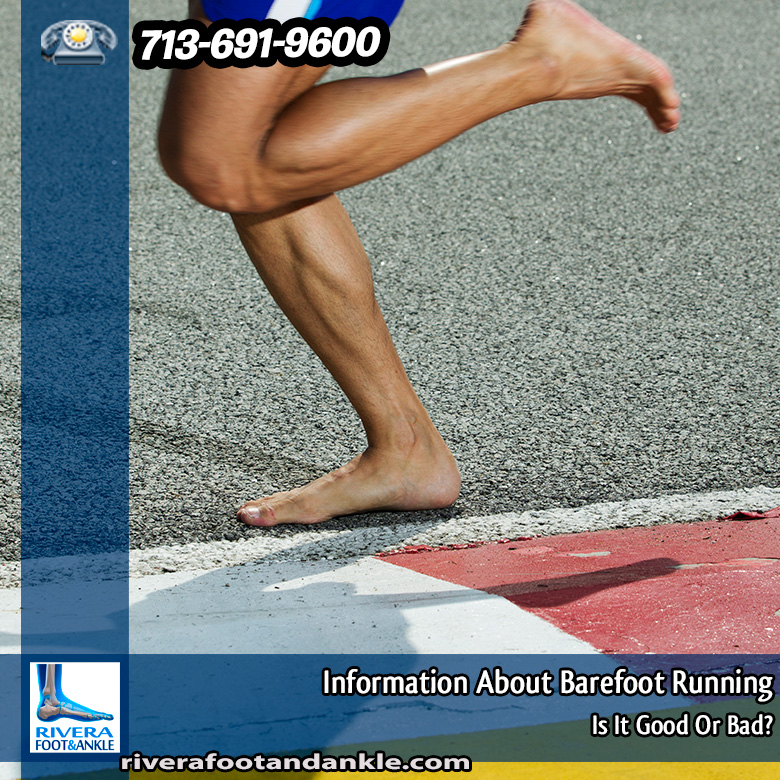
Information About Barefoot Running
Is It Good Or Bad?
Barefoot running, also known as minimalism or natural running, is simply running without shoes or running in thin-soled shoes. Running barefoot is considered to be the natural way of running and some entire cultures still foster this idea such as the Tarahumara in Mexico.
Minimalists, or runners who run in minimal shoes or barefoot, argue barefoot running can correct a runner’s form and foster a forefoot strike, which can result in fewer running injuries than those who run with a heel-strike.
Why Run Barefoot?
In terms of racing, studies have proven that less weight on your feet will improve your running efficiency and decrease your time. Research has also shown that barefoot running forces the foot to impact the ground differently. Running shoes typically make runners strike the ground with their heel first, whereas barefoot running changes the gait to a forefoot strike. Many barefoot runners say they are more comfortable with the change though, since the forefoot strike is a natural motion for most runners. But for runners who are naturally rearfoot strikers, barefoot runs can put stress on the Achilles tendon and lead to injuries. For the average runner, the benefits may not outweigh the advantages when it comes to barefoot running. Because of the higher risk of puncture wounds, infection and other potential injuries, many podiatrists and doctors, like sports podiatrist-biomechanist Kevin Kirby, suggest incorporating barefoot running into your routine, rather than ditching your shoes altogether.
How to Start Running Barefoot
The more minimal a shoe the more your foot, ankle and lower leg have to work to maintain and support your body in motion. This mean the foot, ankle and calves have to be stronger. While minimalism may not be for all runners, most runners can benefit from strengthening their lower leg. Whether you’re trying to transition to barefoot running or just trying to build strength, the transitioning process is beneficial to all runners.
Some ways to begin strengthening to transition to barefoot running are:
- Strengthen the lower body and core
- Practice weight-bearing strength exercises barefoot
- Wearing-bearing movement, such as walking or using the elliptical, with a more minimalist shoe
- Begin to incorporate short intervals (seconds to minutes) of barefoot walking around the house while continuing to use minimal shoes walking or on the elliptical
- Learn how to run barefoot- This way your body learns the natural running motion and it will be translated when using a minimalist shoe. This is a drill with the specific purpose to learn the mechanics of running with less underfoot. Some runners know this authentically while most, when they put on a minimalist shoe, run the same way as they do in a supportive running shoe (not good). If this is the case, take your time and learn this step. You have to learn to crawl before you run and you also need to learn to run without (barefoot) before you run farther with less (minimalist).
- Practice patience and flexibility. Because running in minimalist shoes with natural form uses a host of other muscles (specifically your calves and muscles in your feet) if you plug these shoes (minimalist) into your regular running plan like any new pair of shoes, you will be at a very high risk of developing calf, Achilles, and other foot injuries. Think of this as a tool on your toolbox and a strengthening tool at that.
Source: runnersworld
RIVERA FOOT & ANKLE: At Orlando H.Rivera DPM, our priority is to deliver quality care to informed patients in a comfortable and convenient setting. When you have problems with your feet, you need to turn to a podiatrist who listens and responds… an experienced doctor who knows the field and can effectively diagnose and treat your needs… a friendly physician who counsels you on the best ways to maintain and improve your health. Our physician(s) meet all these criteria. Plus, you benefit from a dedicated team of trained professionals who give you the individualized attention you deserve.

Advanced Foot & Ankle Specialist.
Keywords: Foot and Ankle, Dr. Orlando Rivera, Advanced Foot & Ankle Specialist, Foot and Ankle Podiatry, Houston Food & Ankle Surgical, Treatment of Foot and Ankle, Foot & ankle specialists, Podiatrist in houston, podiatrist in houston, Orlando H.Rivera DPM, Houston Foot Doctor, Food and Ankle Surgeon Houston, Ankle and Foot Specialist Houston, Podiatrist Houston, Foot Pain Houston



